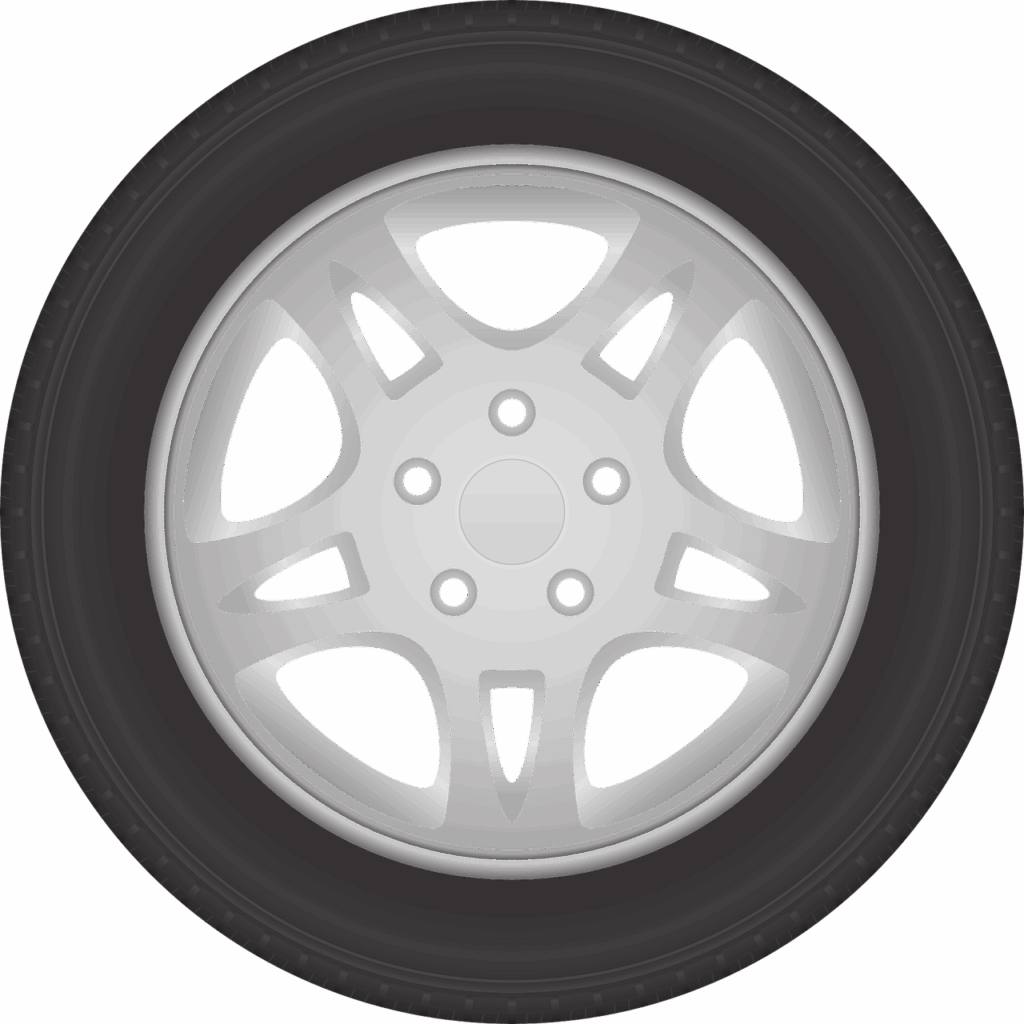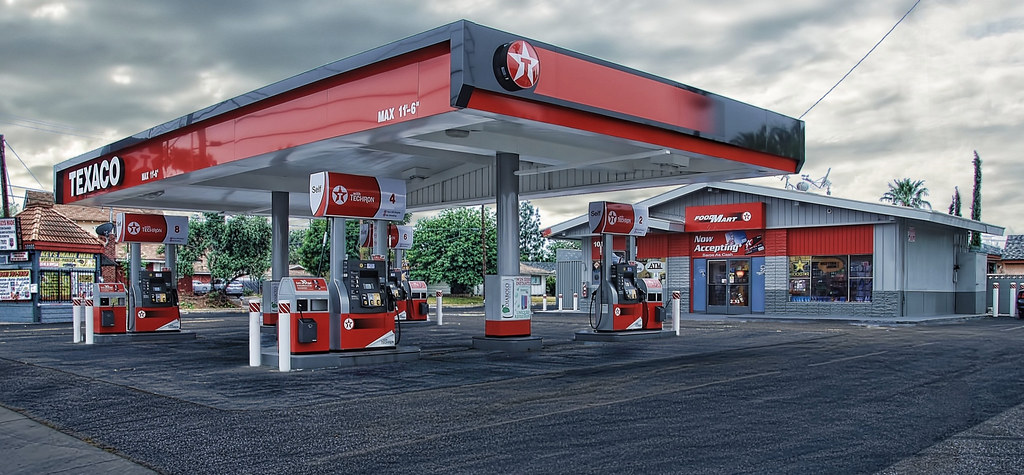
Buying a new car can be a double-edged sword—it may bring joy but also financial pain. This truth resonates deeply with anyone who has ever fallen in love with a vehicle, only to find themselves grappling with unexpected expenses down the road. Beyond the initial purchase price, a hidden web of costs — including registration, insurance, maintenance, and repair expenses — can quickly transform a dream car into a financial burden, making some vehicles a veritable money pit.
Indeed, premium vehicles, especially when bought used at a fraction of their original price, are rarely cheap to maintain. While the allure of a pre-owned BMW, Range Rover, or Mercedes-Benz is undeniable, the stark reality is that these vehicles often come with steep maintenance and repair costs that can add up quickly, making them an expensive choice in the long run. The older a vehicle, the more likely you are to spend a considerable amount on upkeep, even if you’re not making monthly car payments.
This article, compiled using data from CarEdge and RepairPal, aims to shed light on some of the most notorious cars for high maintenance costs. We’ve considered factors like estimated total 10-year maintenance costs, annual expenses, and the likelihood of needing a major repair. If you’re not prepared to shell out a small fortune on repairs yearly, prepare to be well-informed about these vehicles and the potential financial commitment that comes with ownership.

1. **Ram 2500-5500**For those who demand unparalleled capability for tough towing and hauling jobs, the heavy-duty versions of the full-size Ram pickup truck are often the go-to choice. These trucks are built to withstand immense stress and deliver exceptional performance in demanding conditions, making them indispensable workhorses for many businesses and individuals alike. Their rugged construction and powerful engines are designed for serious utility, often operating in environments that test the limits of any vehicle.
However, this incredible capability comes at a significant cost when it comes to long-term maintenance. The Ram 2500-5500 models are notorious for having the highest maintenance costs among all the ranked vehicles in our analysis. Over a 10-year period, the total ownership cost for these heavy-duty Rams ranges from a staggering $25,134 to $25,844, placing them at the very top of the list for expense.
Breaking down these costs, annual expenses for the Ram 2500-5500 start at $778 in the first year. This figure steadily climbs, reaching an alarming $4,889 by the tenth year, reflecting the escalating demands of maintaining such robust machinery. Furthermore, owners face a daunting 79.2% chance of needing a major repair during that decade. This probability, significantly higher than many other vehicles on this list, underscores the substantial financial commitment required to keep these powerful trucks in optimal condition.
The heavy-duty trucks from RAM are particularly challenging when it comes to ten-year reliability testing. The sheer scale and complexity of their components, coupled with the strenuous tasks they are designed for, contribute to these high figures. An average cost of almost $26,000 for this duration to keep the truck in its best shape highlights that while they offer unmatched utility, owners must be ready for the financial reality of their upkeep.
Read more about: Vehicles That Spell Trouble: 15 Cars with Notoriously Costly Repair Histories for Consumers
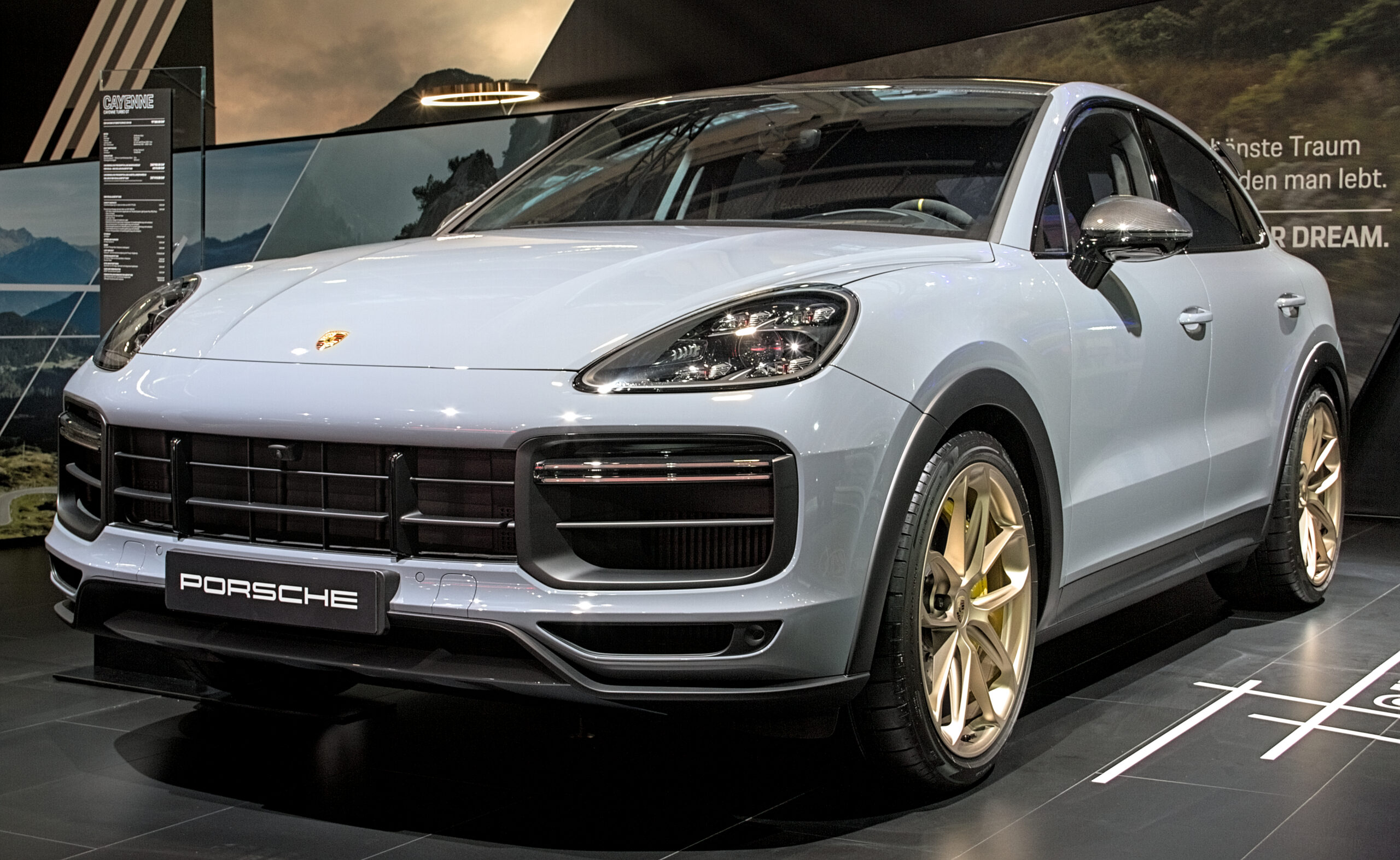
2. **Porsche Cayenne**The Porsche Cayenne has carved out a unique niche for itself, rightfully earning the moniker “the Porsche of SUVs.” It perfectly blends powerful engine options with exceptional handling, capabilities that often rival those found in many dedicated sports cars. For enthusiasts who need the practicality of an SUV without sacrificing the thrill of a Porsche driving experience, the Cayenne presents an almost irresistible package of luxury, performance, and versatility.
Yet, as with most high-performance luxury vehicles, owning a Porsche Cayenne comes with a significant financial caveat: substantial maintenance and repair costs. Over a 10-year period, the total ownership cost for a Cayenne is estimated at $20,552. This figure positions it as one of the most expensive vehicles to maintain on our list, indicating that the initial investment is just the beginning of the financial journey.
Annual expenses for this mid-size SUV begin at $721 in the first year. These costs don’t remain static; they climb steadily, reaching $3,827 by the tenth year, reflecting the increasing maintenance demands as the vehicle ages. Adding to the financial considerations, there’s a 60.9% chance of needing a major repair during that decade. This high probability underscores the intensive maintenance required to uphold its performance capabilities and sophisticated engineering.
The context further reveals that the Cayenne is rated only 1.5 on RepairPal’s reliability scale, which is quite low. The average repair cost for each year is $1,231, significantly higher than the overall average cost of $807. This comprehensive view of its costs reinforces that while the Cayenne delivers on its promise of performance and luxury, prospective owners must be fully aware of the ongoing financial commitment its upkeep demands.
Car Model Information: 2016 Porsche Cayenne Turbo S
Name: Porsche Cayenne
Manufacturer: Porsche
Production: August 2002–present
ModelYears: 2003–present
Class: crossover SUV
Layout: Front-engine, four-wheel-drive
Categories: 2010s cars, 2020s cars, All-wheel-drive vehicles, All articles needing additional references, All articles with dead external links
Summary: The Porsche Cayenne is a series of automobiles manufactured by the German company Porsche since 2002. It is a luxury crossover SUV, and has been described as both a full-sized and a mid-sized vehicle. The first generation was known within Porsche as the Type 9PA (955/957) or E1. It was the first V8-engined vehicle built by Porsche since 1995, when the Porsche 928 was discontinued. It is also Porsche’s first off-road variant vehicle since its Super and Junior tractors of the 1950s, as well as the first production Porsche with four doors. Since 2014, the Cayenne has been sold alongside a smaller Porsche SUV, the Macan.
The second-generation Cayenne (Type 92A or E2) was unveiled at the 2010 Geneva Motor Show in March. The Cayenne shares its platform, body frame, doors, and electronics with the Volkswagen Touareg and Audi Q7. It received a facelift in 2014 with minor external changes, and introduced a new plug-in E-Hybrid version with its public launch at the Paris Motor Show. Since 2008, all engines have featured direct injection technology. The third generation (Type 9YA or E3) was unveiled in 2017 in the German city of Stuttgart.
Get more information about: Porsche Cayenne
Buying a high-performing used car >>>
Brand: Porsche Model: Cayenne
Price: $45,500 Mileage: 81,796 mi.
Read more about: Buyer Beware: 12 SUV Models Plagued by Expensive, Post-Warranty Repairs
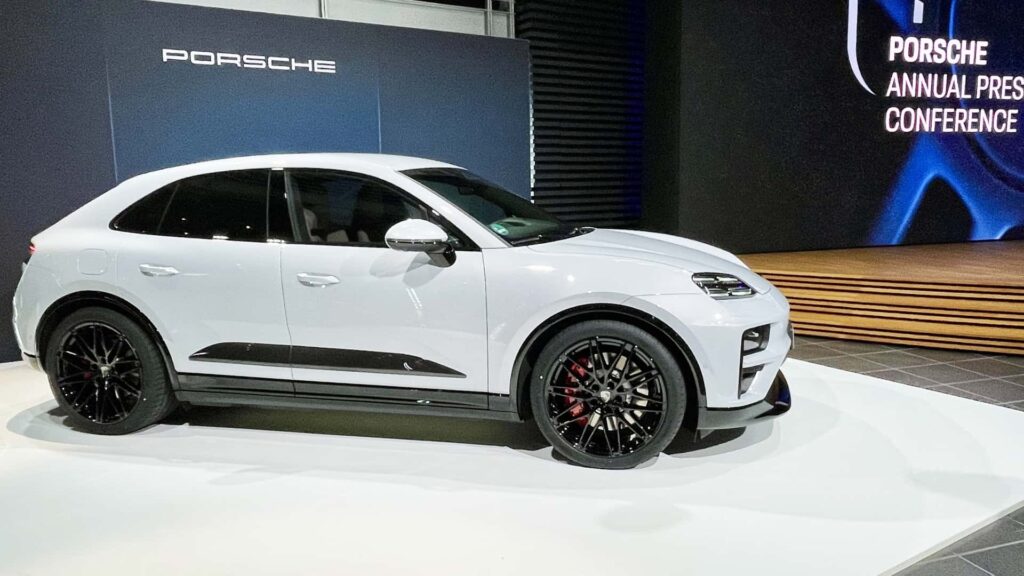
3. **Porsche Macan**As a compact SUV, the Porsche Macan offers an impressive blend of performance and agility, often compared favorably to its larger sibling, the Cayenne, in terms of driving dynamics. It provides a more accessible entry point into the Porsche SUV lineup while still delivering that distinctive Stuttgart engineering prowess and sporty feel. For many, it represents the ideal balance between everyday practicality and exhilarating performance, making it a popular choice for luxury-minded drivers.
However, the allure of the Macan’s impressive performance and compact luxury is tempered by its notoriously high maintenance and repair costs. Over a 10-year period, the total cost of ownership for a Porsche Macan can reach a substantial $20,137. This places it among the vehicles that demand a significant financial outlay beyond the purchase price, prompting buyers to consider the long-term implications carefully.
The annual costs for the Macan start at $679 in the first year of ownership. Much like its luxury brethren, these expenses are not static; they steadily rise, reaching $3,786 by the tenth year. This escalation in costs highlights the increasing complexity and wear that come with an aging high-performance vehicle. The data also reveals a 60.9% chance of needing a major repair over the decade, suggesting that significant unexpected expenses are a very real possibility.
The Macan’s reliability rating on RepairPal is a low 1.5 out of 5, further emphasizing its potential for costly issues. Its average annual maintenance cost is estimated at $1,265, making it clear that owning this compact SUV can be more expensive to maintain than even some of Porsche’s dedicated sports cars. This makes it crucial for prospective owners to budget adequately for these ongoing expenses to avoid financial surprises.
Car Model Information: 2021 Porsche Macan Base
Name: Porsche Macan
Manufacturer: Porsche AG
Production: February 2014 – present
ModelYears: 2015–present
Class: Compact luxury crossover SUV
BodyStyle: SUV
Caption: 2024 Porsche Macan 4 Electric
Categories: All-wheel-drive vehicles, All Wikipedia articles written in British English, All articles needing additional references, All articles with unsourced statements, Articles needing additional references from September 2025
Summary: The Porsche Macan is a compact luxury crossover SUV (D-segment) produced by German manufacturer Porsche since 2014. It is the smaller SUV from Porsche below the Cayenne. The first-generation Macan entered production from February 2014 with petrol and diesel engine options. In 2024, Porsche released the second-generation Macan which is a battery electric vehicle built on the dedicated Premium Platform Electric (PPE) EV platform. The first-generation and second-generation Macan will be marketed side-by-side, providing multiple powertrain options for consumers.
Since 2015, its first full year in the market, the Macan has been the best-selling Porsche model globally ahead of the larger Cayenne.
Get more information about: Porsche Macan
Buying a high-performing used car >>>
Brand: Porsche Model: Macan
Price: $26,980 Mileage: 105,695 mi.
Read more about: Revving Up Your Portfolio: 14 Once-Overlooked Vintage Cars Poised for Explosive Investment Growth

4. **Ram ProMaster City/Cargo Van**For small businesses and urban professionals who require a versatile and practical workhorse, the Ram ProMaster and ProMaster City vans offer an ideal solution. These commercial vans are designed to navigate crowded city streets with ease, providing ample cargo space and adaptability for various occupational needs. Their utilitarian design and functional features make them a staple for delivery services, tradespeople, and other enterprises where mobility and capacity are paramount.
Despite their practical appeal and robust commercial utility, these Ram vans come with a significant hidden cost: high maintenance expenses. The total 10-year ownership cost for the Ram ProMaster City/Cargo Van models is estimated to range from $19,870 to $20,061. This substantial figure positions them as a considerably expensive option for businesses, challenging the notion that commercial vehicles are always economical to run.
The annual costs associated with maintaining these vans begin at $621 in the first year. These expenses, critical for businesses to factor into their operational budgets, climb steadily, reaching $3,845 by the tenth year. This upward trajectory in costs over time can significantly impact a business’s bottom line. Additionally, there is a substantial 63.2% chance of needing a major repair during the 10-year period, representing a high risk of unexpected and costly downtime.
This combination of rising annual costs and a high probability of major repairs makes the Ram ProMaster City/Cargo Van a more expensive option for businesses seeking reliable vehicles that are also high-maintenance. While their initial purchase price and operational versatility might be attractive, the long-term financial commitment for upkeep and potential repairs warrants careful consideration for any small business owner or fleet manager.
Car Model Information: 2024 Hyundai SANTA FE SEL 2.4
Name: Fiat Doblò
Manufacturer: Fiat,Tofaş,Stellantis
Production: 2000–present
Class: Panel van
Predecessor: Fiat Fiorino,Fiat Marengo,Chrysler minivans (RT)
Categories: 2000s cars, 2010s cars, All-wheel-drive vehicles, All articles containing potentially dated statements, All articles with dead external links
Summary: The Fiat Doblò is a panel van and leisure activity vehicle produced by Italian automaker Fiat since 2000. It was unveiled at the Paris Motor Show in October 2000. A second-generation Doblò succeeded the original vehicle in 2010 for most markets, and it was sold in the United States as the RAM ProMaster City from 2015 to 2022. The second generation was also sold in Europe and the UK as the Opel/Vauxhall Combo. The third-generation Doblò, a rebadged version of the Citroën Berlingo, was unveiled in June 2022, and is also sold as the Opel or Vauxhall Combo, Peugeot Partner, and Toyota ProAce.
Get more information about: Fiat Doblò
Buying a high-performing used car >>>
Brand: Ram Model: ProMaster City
Price: $26,999 Mileage: 26,947 mi.
Read more about: More Trouble Than They’re Worth: Unpacking the 14 Most High-Maintenance Cars on the Road
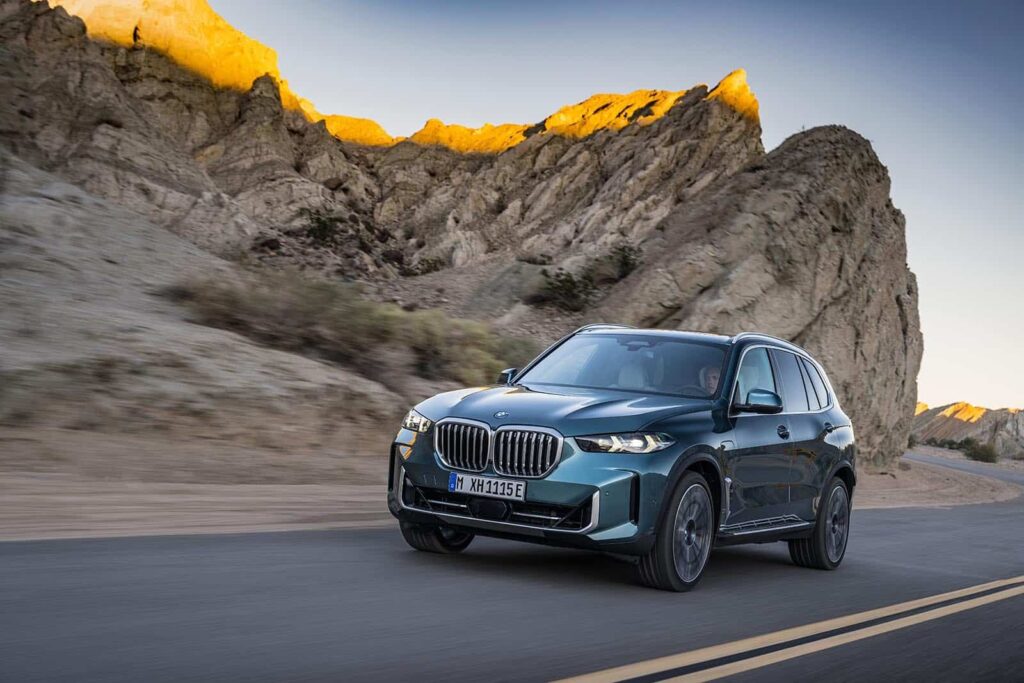
5. **BMW X6 M**The BMW X6 M stands out as the high-performance variant of the mid-size X6 SUV, instantly recognizable by its sharply sloped coupe-like roofline. This distinctive design choice imbues it with a sportier profile, appealing to drivers who crave aggressive aesthetics combined with a powerful driving experience. While it sacrifices some rear headroom and cargo space in favor of its sleek silhouette, the X6 M is engineered to deliver exhilarating performance that lives up to its M badge.
However, the pursuit of high performance and distinctive styling invariably translates into elevated maintenance and repair costs. Over a 10-year period, the total cost of ownership for a BMW X6 M is estimated at a considerable $18,900. This places it firmly among the luxury performance vehicles that demand a substantial financial investment not just upfront, but consistently throughout its lifespan.
Annual costs for the X6 M typically start at $693 in the first year. These expenses, a testament to the sophisticated engineering and high-quality components under the hood, steadily rise to $3,479 by the tenth year. This increasing cost reflects the natural wear and tear on high-performance parts and the specialized care they require. Furthermore, there’s a 54.6% chance of needing a major repair during that decade, a probability that owners should not underestimate.
According to RepairPal, the BMW X6 M has a 2-star reliability rating, which is on the lower side. AutoList’s estimate also confirms the 54.6% chance of needing a major repair, and the average annual repair cost is stated to be $1,206. This makes it one of the most expensive SUVs to maintain, reinforcing the notion that its performance focus and maintenance demands are directly linked to its high cost of ownership.
Car Model Information: 2021 Nissan Rogue SL
Name: BMW X6
Caption: BMW X6 (G06)
Manufacturer: BMW
Production: December 2007 – present
ModelYears: 2008–present
Class: Executive car,crossover SUV
BodyStyle: coupé SUV
Layout: Front-engine, four-wheel-drive
Related: BMW X5
Categories: 2000s cars, 2010s cars, 2020s cars, All-wheel-drive vehicles, All Wikipedia articles written in British English
Summary: The BMW X6 is a mid-size luxury crossover SUV by German automaker BMW. The BMW X6 is the originator of the sports activity coupé (SAC), referencing its sloping rear roof design. It combines the attributes of an SUV (high ground clearance, all-wheel drive and all-weather ability, large wheels and tires) with the stance of a coupé (styling featuring a sloping roof). It is built in BMW’s North American plant in Greer, South Carolina alongside the BMW X5, whose platform it shares. Prior to the release of the X7, the X6 was considered a flagship SUV for BMW.
The first generation (E71) was released for sale in April 2008 for the 2008 model year, while the second-generation X6 (F16) was launched at the Paris Motor Show in 2014. The third-generation X6 was revealed in July 2019.
Get more information about: BMW X6
Buying a high-performing used car >>>
Brand: BMW Model: X6 M
Price: $20,995 Mileage: 117,217 mi.
Read more about: Beyond the Showroom Shine: A Mechanic and Enthusiast’s Unvarnished Truth About 13 Cars and Why New Isn’t Always Better
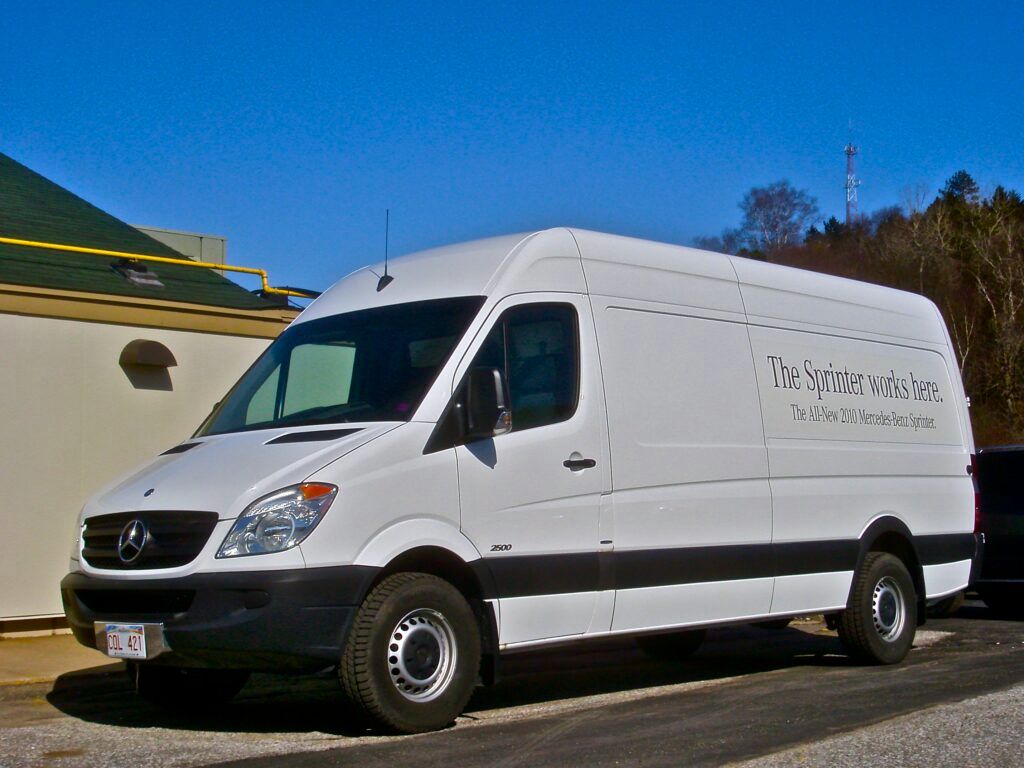
6. **Mercedes-Benz Sprinter Van**The Mercedes-Benz Sprinter Van is a ubiquitous sight in the commercial vehicle landscape, a testament to its widespread appeal and versatility for various business needs. Available in a range of sizes and roof lengths, it offers businesses immense flexibility, whether for logistics, passenger transport, or specialized service operations. The prestige of the Mercedes-Benz brand, combined with its robust utility, makes it a favored choice for many enterprises.
Despite its undeniable advantages in capacity and brand recognition, the Sprinter Van is not exempt from the high maintenance costs associated with premium German engineering. Over a 10-year period, the total ownership cost for a Mercedes-Benz Sprinter Van is estimated at $18,634. This significant figure underscores that while it provides versatility, the ongoing expenses can be substantial for businesses relying on it.
Annual costs for the Sprinter Van begin at $621 in the first year of ownership, steadily increasing to $3,513 by the tenth year. These rising maintenance and repair charges contribute to a considerable 56.7% chance of needing a major repair over the vehicle’s lifespan. This probability is a critical consideration for businesses, as unscheduled downtime and expensive fixes can severely impact operational efficiency and profitability.
The context also mentions that this van poses a 56.7% risk of extensive repair in ten years, and the repair cost for the same period is a sizable chunk, i.e., $18,364. While the Sprinter Van offers excellent performance and renowned flexibility, potential owners are encouraged to weigh these high maintenance costs against its benefits. The choice is yours: either budget for these substantial repairs or explore alternatives with potentially better long-term reliability for your fleet.
Car Model Information: 2021 Nissan Rogue SL
Name: Mercedes-Benz Sprinter
Caption: Mercedes-Benz Sprinter (Third generation)
Manufacturer: ubl
Aka: Freightliner Sprinter (2001–2021),Dodge Sprinter (2003–2009),Volkswagen Crafter (2006–2017)
Production: 1995–present
ModelYears: 1995–present (Europe) , 2002–present (North America)
Assembly: Düsseldorf,Tiaret,Nizhny Novgorod
Class: Light commercial vehicle,Full-size van
BodyStyle: vehicle door,pickup truck,crew van,minibus
Related: Volkswagen Crafter,Volkswagen Transporter LT
Successor: Fiat Ducato#Ram ProMaster
Layout: FF layout,FR layout,F4 layout
Sp: uk
Predecessor: Mercedes-Benz TN,Dodge Ram Van,Mercedes-Benz Vario
Categories: 1990s cars, 2000s cars, 2010s cars, All articles needing additional references, All articles with unsourced statements
Summary: The Mercedes-Benz Sprinter is a light commercial vehicle (van) built by Mercedes-Benz Group AG of Stuttgart, Germany as a large van, chassis cab, minibus, and pickup truck. In the past, the Sprinter had been sold under the Mercedes-Benz, Dodge, and Freightliner nameplates. In the U.S., it was built from complete knock down (CKD) kits by Freightliner. Re-badged and re-engined Sprinters were also sold by Volkswagen Commercial Vehicles as the Volkswagen LT and the Volkswagen Crafter. They are now primarily marketed by Mercedes-Benz.
In the Mercedes-Benz van lineup, the Sprinter is the largest model offered, followed by the mid-size Vito (aka Viano, V-Class, and EQV) and small Citan.
Get more information about: Mercedes-Benz Sprinter
Buying a high-performing used car >>>
Brand: Mercedes-Benz Model: Sprinter Van
Price: $20,995 Mileage: 117,217 mi.
Read more about: Beyond the Garage: Unearthing the Most Practical and Enjoyable Classic Cars for Your Daily Drive
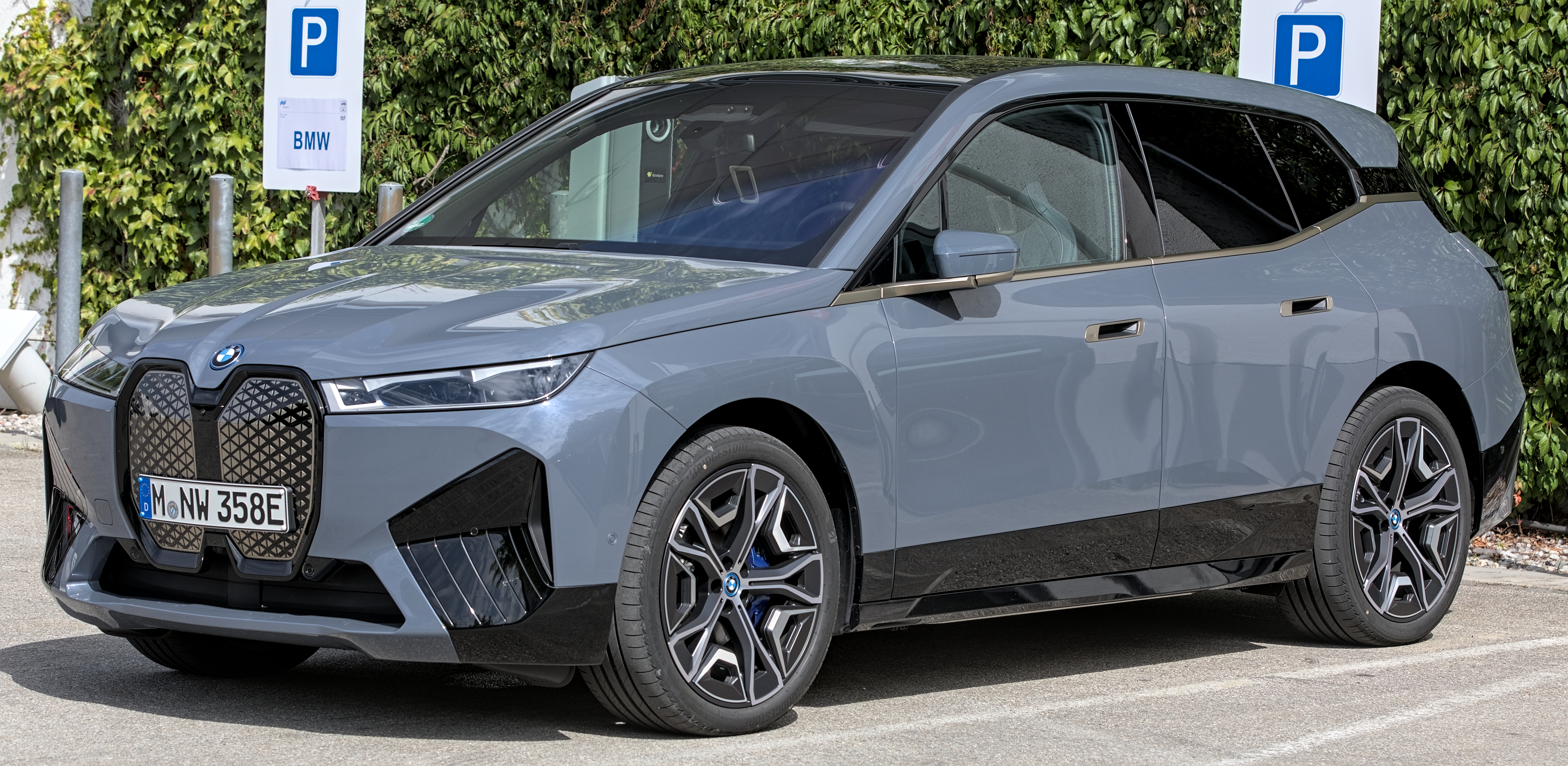
7. **BMW X7**As BMW’s largest and most luxurious SUV, the X7 is designed to impress, offering three rows of seating and a commanding presence on the road. It provides an exquisite balance of comfort and sportiness, propelled by a choice of powerful turbocharged V6 and V8 engines. For families or individuals seeking opulent transportation with ample space and performance, the BMW X7 represents the pinnacle of the brand’s SUV offerings, blending practicality with uncompromised luxury.
However, the grandeur and advanced engineering of the BMW X7 inevitably translate into substantial long-term maintenance costs. Over a 10-year period, the total ownership cost for this flagship SUV is estimated at $18,550. This figure positions it as a significant financial commitment beyond its initial premium purchase price, highlighting the ongoing expenses required to maintain such a sophisticated vehicle.
Annual costs for the X7 begin at $658 in the first year, a reflection of its high-tech components and specialized service requirements. These expenses continue to rise predictably, reaching $3,444 by the tenth year, underscoring the increasing demands of an aging luxury vehicle. Moreover, owners face a 54.6% chance of requiring a major repair during that decade. This probability highlights that despite its luxury appeal, the X7 has notable maintenance needs that can lead to unforeseen expenditures.
The X7 is indeed a full-size luxury SUV that, according to another mention in the context, “requires you to pull over at a repair shop more often than the average.” It holds a 2 out of 5 RepairPal reliability rating, further emphasizing the need for owners to set aside an average of $1,166 yearly for repairs. This comprehensive overview of its costs makes it clear that while the BMW X7 offers a luxurious driving experience, its ownership demands a robust budget for ongoing upkeep.
Continuing our journey through the automotive landscape of potential money pits, we now delve into more vehicles that, while offering undeniable appeal, demand a substantial financial commitment for their upkeep. Being informed about these ongoing costs is essential for any savvy car owner looking to avoid unwelcome surprises.
Car Model Information: 2024 BMW X7 xDrive40i
Name: BMW X7
Manufacturer: BMW
ModelCode: G07
Production: December 2018 – present
ModelYears: 2019–present
Assembly: ubl
Class: Full-size,luxury car,crossover SUV
BodyStyle: SUV
Layout: Front-engine, four-wheel-drive layout
Platform: BMW CLAR platform
Related: unbulleted list
Engine: unbulleted list
Transmission: ZF 8HP transmission,automatic transmission#Hydraulic automatic transmissions
Wheelbase: 3105 mm
Abbr: on
Length: convert
Width: 2000 mm
Height: convert
Weight: convert
Designer: Julien Sarreméjean,Anders Thøgersen (facelift)
Drivetrain: MHEV
Categories: 2020s cars, All-wheel-drive vehicles, All articles with dead external links, Articles with dead external links from July 2025, Articles with permanently dead external links
Summary: The BMW X7 is a full-size luxury crossover sport utility vehicle manufactured by BMW. It is BMW’s largest and second most expensive SUV in its line-up, and is considered a flagship SUV for the brand.
The X7 was first announced by BMW in March 2014. It was officially unveiled on October 17, 2018, with pre-orders being taken online. The X7 has been available at dealers since March 2019.
Get more information about: BMW X7
Buying a high-performing used car >>>
Brand: BMW Model: X7
Price: $65,840 Mileage: 36,153 mi.
Read more about: Navigating the Electric Future: Our Expert Picks for the Top 12 EVs You Can Buy Right Now

8. **BMW X5**The BMW X5 strikes an impressive balance between the smaller X3 and the more imposing X7, presenting itself as a robust and well-rounded luxury SUV. Powered by a potent turbocharged 3.0-liter six-cylinder engine, it delivers strong performance coupled with a level of comfort that makes it a popular choice for families and enthusiasts alike. It truly embodies the luxury and driving dynamics BMW is known for, offering a compelling package of sophistication and capability.
However, beneath its polished exterior and powerful drivetrain lies a significant financial reality: substantial long-term maintenance costs. Over a 10-year period, owning a BMW X5 is estimated to rack up $18,389 in total ownership costs. This figure includes steadily increasing annual expenses, which start at $642 in the first year and can climb to $3,428 by the tenth year, reflecting the increasing demands of an aging luxury vehicle.
Adding to the financial considerations, there’s a considerable 54.6% chance of needing a major repair during that decade. This probability underscores the X5’s maintenance-intensive nature, meaning owners should be prepared for potential significant expenditures. According to RepairPal, the X5 holds a low 2 out of 5 reliability rating, further suggesting it may require more frequent trips to the repair shop than the average vehicle.
Prospective owners of the BMW X5 should recognize that this full-size luxury SUV isn’t just about the initial purchase price. To keep it running smoothly and in top condition, you must set aside an average of $1,166 yearly for repairs alone. This ongoing financial commitment is a crucial factor to consider before welcoming an X5 into your garage.
Car Model Information: 2022 BMW X5 xDrive40i
Name: BMW X5
Manufacturer: BMW
Class: Mid-size,luxury vehicle,crossover SUV
BodyStyle: SUV
Production: 1999–present
Layout: Front-engine, four-wheel-drive layout,Front-engine, rear-wheel-drive layout
Categories: 2000s cars, 2010s cars, All-wheel-drive vehicles, All articles with unsourced statements, Articles with short description
Summary: The BMW X5 is a mid-size luxury crossover SUV produced by BMW. The X5 made its debut in 1999 as the E53 model. It was BMW’s first SUV. At launch, it featured all-wheel drive and was available with either a manual or automatic gearbox. The second generation was launched in 2006, and was known internally as the E70. The E70 featured the torque-split capable xDrive all-wheel drive system mated to an automatic gearbox. In 2009, the X5 M performance variant was released as a 2010 model.
BMW marketed the X5 officially as a “Sports Activity Vehicle” (SAV), rather than an SUV, to indicate its on-road handling capability despite its large dimensions. The X5 signaled a shift away from the utilisation of body-on-frame construction, in favour of more modern monocoque chassis construction. Although the Mercedes-Benz M-Class was introduced more than a year prior to the X5, the X5 was the first to utilise a monocoque chassis. The M-Class used body-on-frame construction until its second generation.
The X5 is primarily manufactured in North America, at BMW Group Plant Spartanburg. Assembly operations also took place in Russia by Avtotor until February 2022, along with operations in India, Indonesia, Malaysia, and Thailand. The X5 is also modified for armoured security versions, at the BMW de México Toluca plant.
The automaker’s SAV series, which was started by the X5, has expanded with derivations of other number-series BMWs. This began in 2003 with the X3, and continued in 2008 with the X6 (which shares its platform with the X5).
Get more information about: BMW X5
Buying a high-performing used car >>>
Brand: BMW Model: X5
Price: $39,577 Mileage: 39,525 mi.
Read more about: Beyond the Showroom Shine: A Mechanic and Enthusiast’s Unvarnished Truth About 13 Cars and Why New Isn’t Always Better
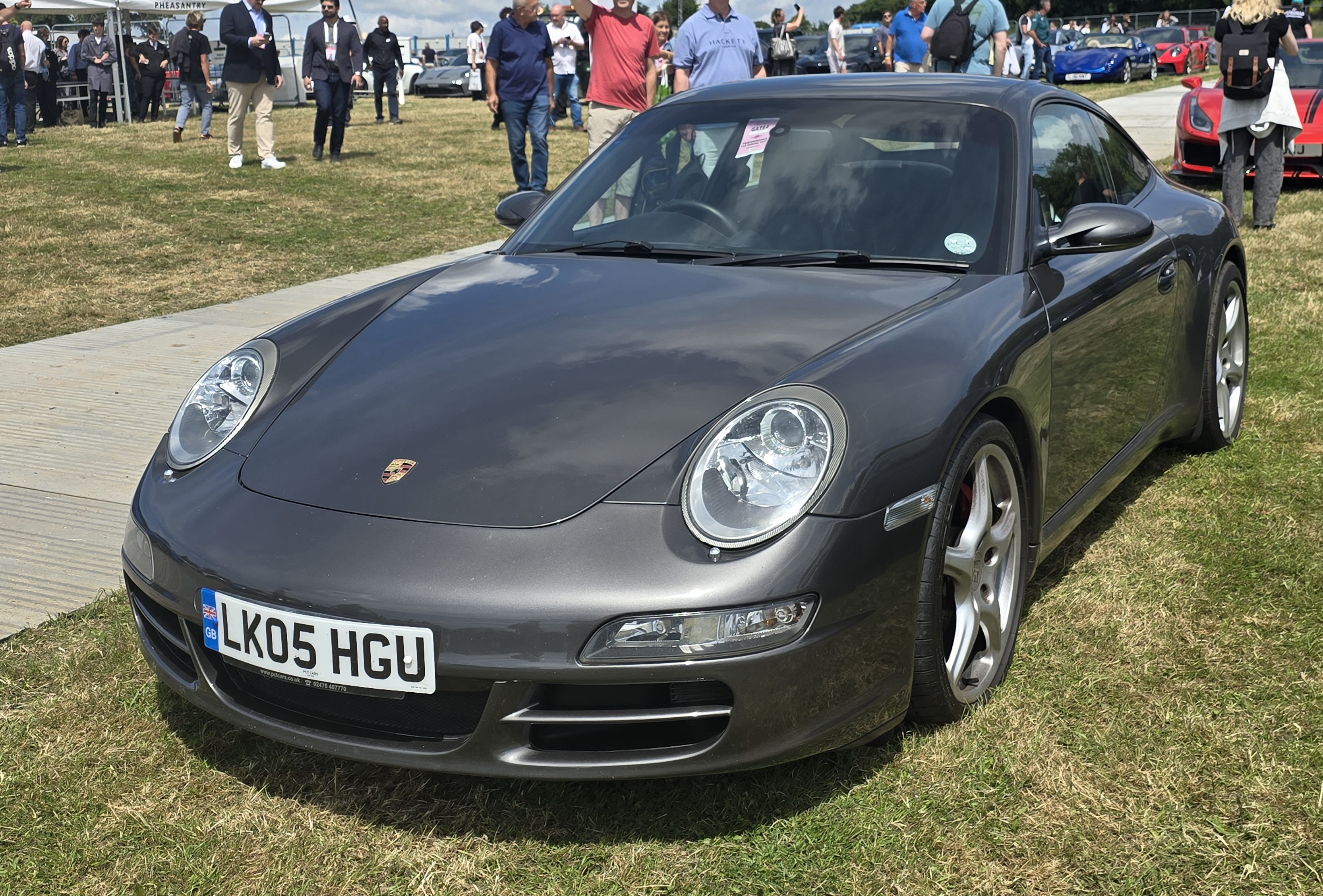
9. **Porsche 911**For decades, the Porsche 911 has stood as a benchmark in the sports car world, celebrated for its unparalleled driving experience, iconic design, and remarkable versatility across various models. It’s a car that evokes passion and exhilaration, offering a blend of performance and precision engineering that few can rival. For many, owning a 911 is the realization of a lifelong dream, representing the pinnacle of automotive excellence.
Yet, this masterpiece of German engineering comes with a significant price tag beyond the showroom floor. Over a 10-year ownership period, the total maintenance cost for a Porsche 911 is estimated at $18,231. This sum reflects escalating annual expenses, starting at $780 in the first year and rising to $3,208 by the tenth year, a testament to the specialized care and premium components required for its upkeep.
Owners also face a 47.6% chance of needing a major repair during that decade, a probability that, while perhaps lower than some others on this list, still highlights the potential for substantial unexpected costs. The average annual repair cost for a 911 is estimated at $1,072, placing it 25th out of 31 cars in its category regarding reliability.
Despite these figures, the allure of the Porsche 911 remains potent. For many enthusiasts, the unparalleled driving experience and the prestige of owning such a high-performance vehicle justify the higher expenses. It’s a choice that often comes down to balancing the joy of ownership against the practicalities of ongoing financial commitment.
Car Model Information: 2024 Porsche 911
Name: Porsche 911
Caption: The 1 millionth 911 produced on display at Volkswagen Group Forum, Berlin
Designer: Ferdinand Alexander Porsche
Manufacturer: Porsche
Production: September 1964 – present
Assembly: Stuttgart,Baden-Württemberg
Class: Sports car
BodyStyle: unbulleted list
Related: unbulleted list
Layout: Rear-engine design,rear-wheel drive
Predecessor: Porsche 356
Categories: 1970s cars, 1980s cars, 1990s cars, 2+2 coupés, 2000s cars
Summary: The Porsche 911 model series (pronounced Nine Eleven or in German: Neunelf) is a family of German two-door, high performance rear-engine sports cars, introduced in September 1964 by Porsche AG of Stuttgart, Germany, and now in its eighth generation. All 911s have a rear-mounted flat-six engine, and usually 2+2 seating, except for special 2-seater variants. Originally, 911s had air-cooled engines, and torsion bar suspension, but the 911 has been continuously enhanced, and evolved across generations. Though the 911 core concept has remained largely unchanged, water-cooled engines were introduced with the 996 series in 1998, and front and rear suspension have been replaced by Porsche-specific MacPherson suspension up front, and independent multi-link rear suspension.
The 911 has been raced extensively by private and factory teams, in a variety of classes. It is among the most successful competition cars. In the mid-1970s, the naturally aspirated 911 Carrera RSR won world championship races including Targa Florio and the 24 Hours of Daytona. The 911-derived 935 turbo also won the 24 Hours of Le Mans in 1979. Porsche won the World Championship for Makes in 1976, 1977, 1978, and 1979 with 911-derived models.
In a 1999 poll to determine the Car of the Century, the 911 ranked fifth — one of two in the top five that had remained continuously in production (the original Beetle remained in production until 2003). The one millionth example was manufactured in May 2017 and is in the company’s permanent collection.
Get more information about: Porsche 911
Buying a high-performing used car >>>
Brand: Porsche Model: 911
Price: $239,888 Mileage: 6,944 mi.
Read more about: Buyer Beware: 12 SUV Models Plagued by Expensive, Post-Warranty Repairs
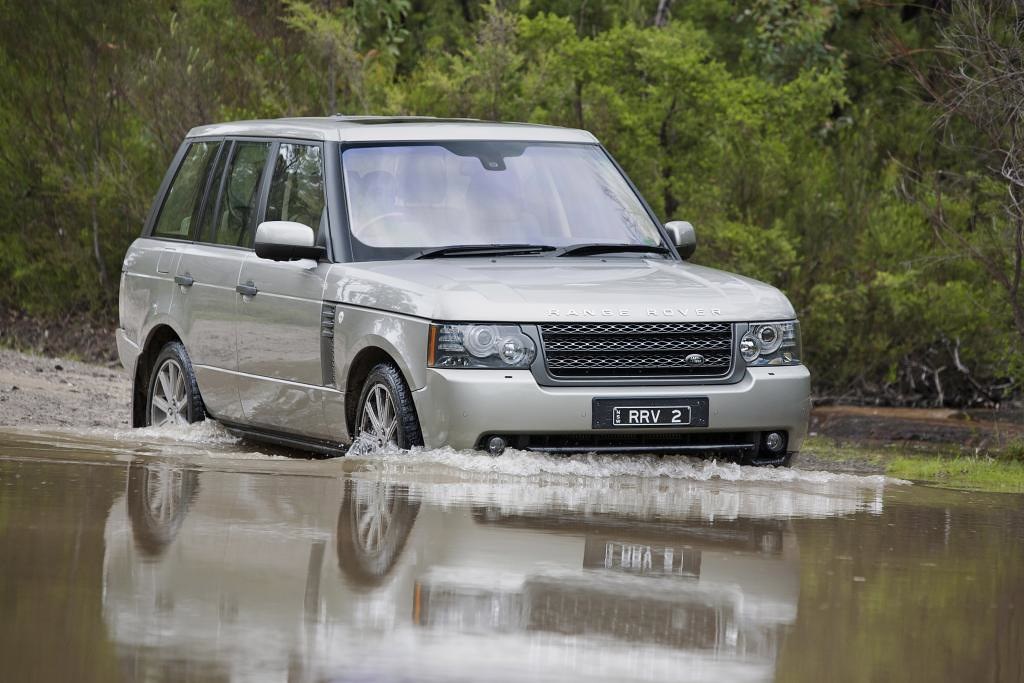
10. **Land Rover Range Rover**The Land Rover Range Rover has long been synonymous with ultimate luxury and formidable off-road capability, a vehicle designed to exude style, comfort, and versatility fit for royalty. Redesigned for 2022, it continues to impress with its sophisticated presence and ability to navigate both rugged terrain and urban boulevards with equal aplomb. It’s a vehicle that many aspire to own, symbolizing prestige and adventurous spirit.
However, the regal appeal of the Range Rover is matched by its substantial long-term maintenance and repair costs. Over a 10-year period, the estimated total ownership cost reaches $18,228. Annual expenses for this opulent SUV begin at $735 in the first year, steadily climbing to $3,267 by the tenth year, demonstrating the increasing financial demands as the vehicle ages and its complex systems require more attention.
Owners also face a nearly 50% chance, specifically 49.6%, of needing a major repair within that decade, a statistic that underlines the vehicle’s intricate nature. According to RepairPal, the Range Rover scores a mere 2 out of 5 on its reliability scale, indicating it falls below average in terms of dependability.
The average annual repair cost for a Land Rover Range Rover is a hefty $1,258, a figure that truly reflects the “BIG” nature of its upkeep. This high yearly demand is necessary to keep this full-size luxury SUV in its optimum condition. Prospective buyers must be ready to commit to these significant ongoing costs to truly enjoy the Range Rover experience.
Car Model Information: 2021 Nissan Rogue SL
Caption: 2022 Range Rover SE P440e (L460, fifth generation, United Kingdom)
Aka: unbulleted list
Name: Range Rover
Manufacturer: unbulleted list
Production: 1969–present
Assembly: unbulleted list
Class: unbulleted list
Layout: Front-engine, four-wheel-drive layout
Sp: uk
Categories: 1980s cars, 1990s cars, 2000s cars, 2010s cars, 2020s cars
Summary: The Land Rover Range Rover, generally shortened to Range Rover, is a 4WD luxury mid to full size crossover marque and sub-brand of Jaguar Land Rover, owned by India-based Tata Motors. The Range Rover line was launched in 1970 by British Leyland and since 2022 is in its fifth generation.
Additional models have been launched under the Range Rover name, including the Range Rover Sport, Range Rover Evoque, and Range Rover Velar.
Get more information about: Range Rover
Buying a high-performing used car >>>
Brand: Land Rover Model: Range Rover
Price: $20,995 Mileage: 117,217 mi.
Read more about: Hollywood’s Fading Reels: 5 Iconic Movies That Simply Wouldn’t See the Light of Day in Today’s World
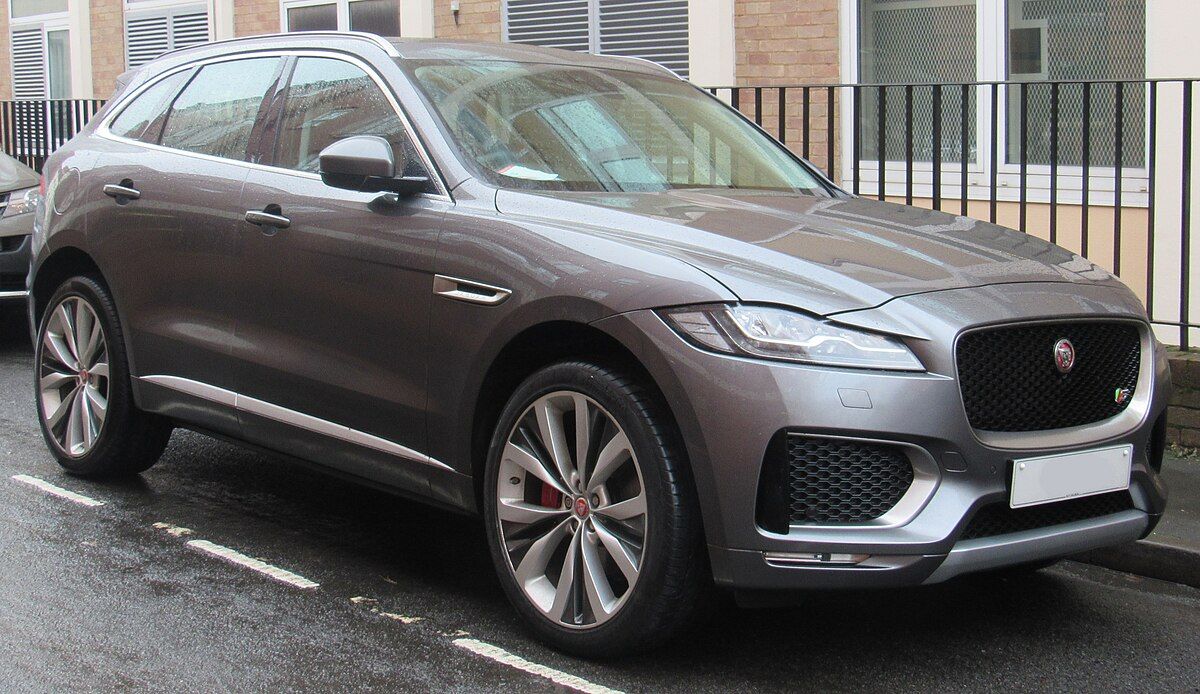
11. **Jaguar F-Pace**The Jaguar F-Pace enters the scene as a captivating SUV that combines stunning aesthetics with impressive performance, often drawing in buyers looking for luxury and dynamism without the higher initial buying cost of some direct competitors. Its sleek lines and athletic stance are undeniable, offering a compelling blend of British elegance and sporty prowess that appeals to many SUV lovers seeking a distinctive vehicle.
Despite its attractive entry price, the F-Pace is a vehicle that commands respect—and a substantial rainy-day fund—when it comes to long-term ownership. While NHTSA has not yet rated the F-Pace for reliability, there have been noted recalls and customer complaints, hinting at potential issues down the road. This suggests that the initial savings on purchase price may be offset by future expenses.
Indeed, Jaguar as a brand is consistently ranked among the most expensive to maintain, a fact that holds true for the F-Pace. According to estimates, owners should anticipate needing to set aside approximately $16,103 for repairs over the first ten years of ownership. This significant figure highlights that while the F-Pace impresses with its performance and style, its maintenance demands are considerable.
This financial commitment means that prospective F-Pace owners should prepare for the higher costs associated with luxury vehicle upkeep. The allure of its performance and style is strong, but a clear understanding of the long-term financial reality is crucial for a satisfying ownership experience.
Car Model Information: 2021 Jaguar F-PACE S
Name: Jaguar F-Pace
Manufacturer: Jaguar Land Rover
ModelCode: X761
Production: February 2016–present
Assembly: Solihull plant
Class: Compact crossover SUV
BodyStyle: SUV
Layout: ubl
Platform: JLR D7a
Related: Jaguar XE,Jaguar XF (X260),Range Rover Velar
Engine: ubl
Motor: 106 kW
Abbr: on
Transmission: Manual transmission,ZF 8HP transmission
Drivetrain: Mild Hybrid
Battery: Kilowatt-hour,Lithium-ion battery
Wheelbase: 2874 mm
Length: 4731 mm
Width: 1936 mm
Height: 1667 mm
Weight: Convert
Designer: Ian Callum
Sp: uk
Categories: 2020s cars, All Wikipedia articles written in British English, Articles with short description, CS1 maint: archived copy as title, Cars introduced in 2016
Summary: The Jaguar F-Pace (X761) is a compact luxury crossover SUV made by Jaguar Land Rover, a British car manufacturer, under their Jaguar marque. It is the first Jaguar model in the SUV class. It was formally announced at the 2015 North American International Auto Show in Detroit, with sales commencing in 2016 following an unveiling at the 2015 International Motor Show Germany in Frankfurt.
The design of the F-Pace is based on the Jaguar C-X17 concept car, which was unveiled on September 9, 2013, at the Frankfurt Motor Show. The 2017 Jaguar F-Pace has been named the honorary winner of the 2017 World Car of the Year and World Car Design of the Year Awards at the New York International Auto Show. The F-Pace is built at Jaguar Land Rover’s Solihull plant along with the Range Rover Velar and employs an additional 1,300 workers.
Get more information about: Jaguar F-Pace
Buying a high-performing used car >>>
Brand: Jaguar Model: F-Pace
Price: $29,451 Mileage: 23,204 mi.
Read more about: Vehicles That Spell Trouble: 15 Cars with Notoriously Costly Repair Histories for Consumers
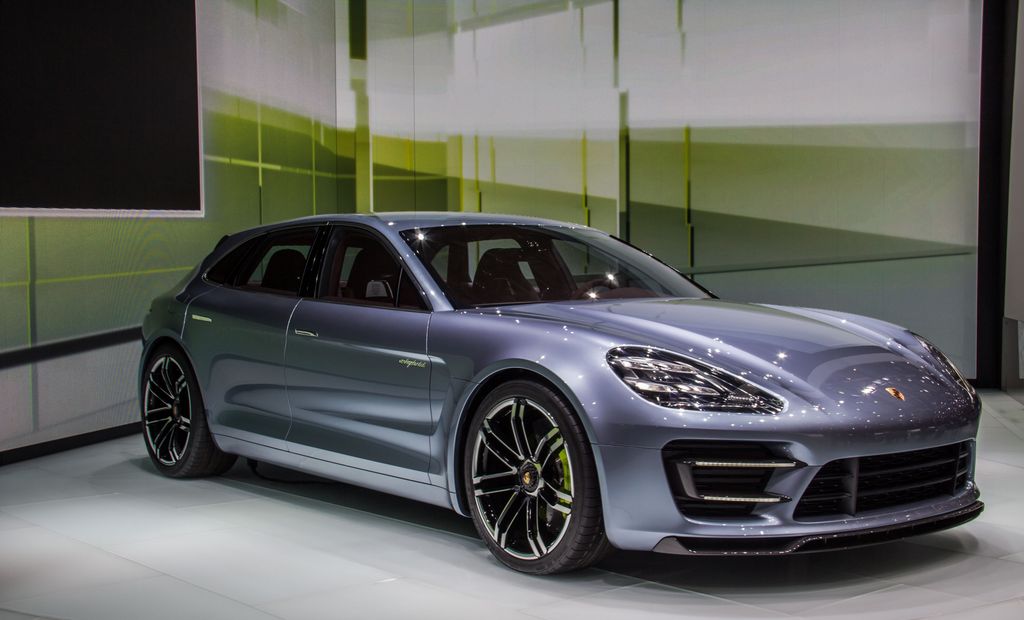
12. **Porsche Panamera**The Porsche Panamera is a unique blend of luxury sedan comfort and sports car performance, designed for those who desire both exhilarating driving dynamics and sophisticated practicality. Its distinctive profile and powerful engine options make it a dream machine for many, embodying Porsche’s commitment to precision engineering and opulent interiors. It promises a driving experience that is both engaging and exceptionally comfortable.
However, when it comes to repair costs, the Panamera is, unfortunately, often described as a “total bummer.” Its luxury and performance come with a harsh reality in terms of dependability. According to RepairPal reliability ratings, the Panamera ranks last in its vehicle category, with an exceptionally low rating of 0.5 out of 5, indicating a strong likelihood of frequent repair jobs.
The financial impact is substantial, with an average annual repair cost estimated at $1,252. Furthermore, its complex turbo systems or intricate drivetrain repairs can easily set owners back by $10,000 or more in a single instance. Even routine service appointments for the Panamera can be two or three times costlier than what one might expect for a standard vehicle.
Despite these daunting figures, the Panamera continues to captivate owners with its unique combination of luxury, performance, and comfort. For those who prioritize the driving experience above all else, the significant repair costs are seen as the price of admission to a truly exceptional automotive world, though not one for the faint of financial heart.
Car Model Information: 2018 Porsche Panamera Base
Name: Porsche Panamera
Caption: 2024 Porsche Panamera (976)
Manufacturer: Porsche
Production: 2009–present
Assembly: Leipzig
Class: Luxury car
Layout: Front-engine, rear-wheel-drive layout
Predecessor: Porsche 989
Sp: uk
Categories: 2010s cars, 2020s cars, All-wheel-drive vehicles, All articles containing potentially dated statements, All articles with unsourced statements
Summary: The Porsche Panamera is a mid- to full-sized luxury car (E-segment or F-segment for LWB in Europe) manufactured and marketed by German automobile manufacturer Porsche. It currently spans across three generations, using a front-engine and rear- or all-wheel drive configuration.
The Panamera debuted at the 13th Auto Shanghai International Automobile Show in April 2009, later launching hybrid and diesel versions in 2011. In April 2013, the company introduced a facelifted model, again at the Shanghai Auto Show, followed by the US introduction of a plug-in hybrid version, the Panamera S E-Hybrid, in November 2013. Porsche launched the second-generation Panamera in 2016, and in November 2023, the third generation was introduced.
The Panamera name, as with the Carrera name, is derived from the Carrera Panamericana race.
Get more information about: Porsche Panamera
Buying a high-performing used car >>>
Brand: Porsche Model: Panamera
Price: $39,880 Mileage: 56,253 mi.
Read more about: Unmasking the Money Pits: 10 Luxury Cars That Spring Costly Repairs on Owners and How to Prepare
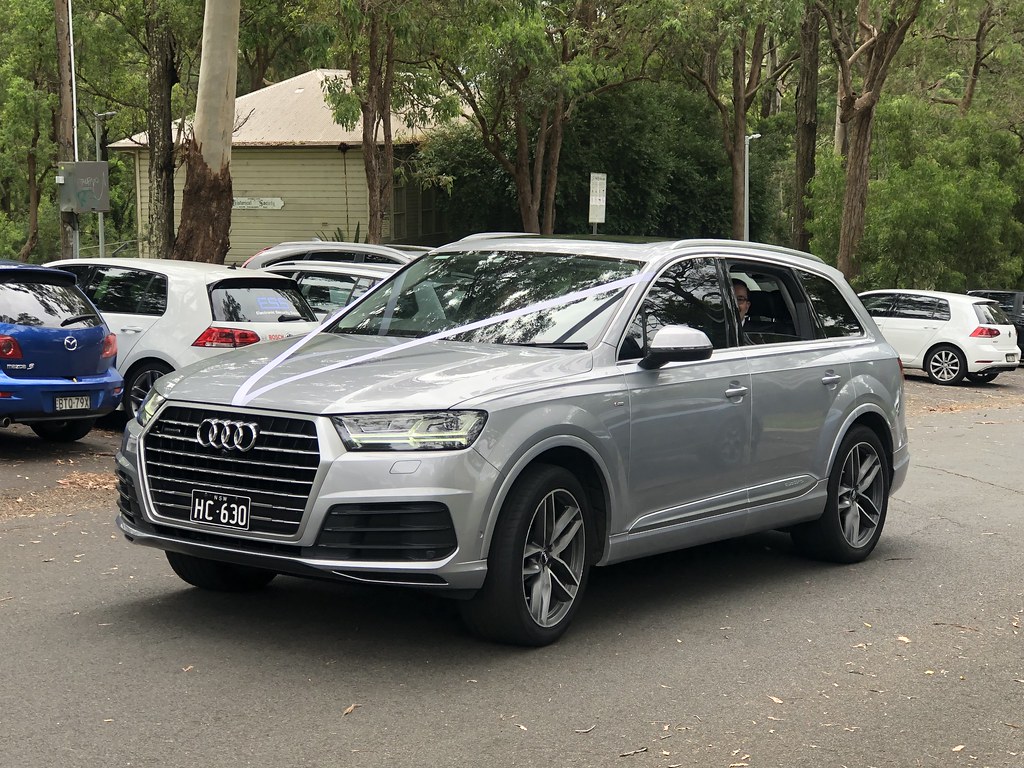
13. **Audi Q7**The Audi Q7 represents a sophisticated entry into the full-size luxury SUV segment, offering a comfortable and pleasing drive with its refined interior, advanced technology, and confident road manners. It’s a popular choice for families seeking a premium vehicle with ample space and a strong sense of German engineering quality. The Q7 certainly delivers on its promise of an upscale and secure driving environment.
While the Q7’s probability of needing a significant repair might be lower than some other luxury contenders, the actual repair costs remain substantial. It holds a 2.5 out of 5 reliability rating on RepairPal, positioning it 8th out of 19 full-size luxury SUVs in terms of dependability. This suggests a middling performance, but with high stakes when issues do arise.
The average annual maintenance cost for the Audi Q7 hovers around $1,185. This figure, though less alarming than some, still significantly outweighs the average for most vehicles, indicating that its premium parts and specialized service contribute to higher ongoing expenses. Owners should be prepared for these costs, even if major repairs are less frequent.
Ultimately, while the Audi Q7 undeniably provides a comfortable and pleasing driving experience, prospective buyers must carefully assess the total ownership cost. Factoring in its average annual maintenance budget is essential to ensure that this luxury SUV fits comfortably within your long-term financial plans, preventing any unwelcome surprises down the road.
Car Model Information: 2021 Audi Q7 55 Premium Plus
Name: Audi Q7
Manufacturer: Audi AG
Production: November 2005–present
ModelYears: 2006–present
Class: Full-size,luxury SUV
BodyStyle: SUV
Layout: Longitudinal engine,front-engine, four-wheel-drive
Sp: uk
Categories: 2010s cars, 2020s cars, All-wheel-drive vehicles, All Wikipedia articles written in British English, All articles with dead external links
Summary: The Audi Q7 is a crossover SUV made by the German manufacturer Audi, unveiled in September 2005 at the Frankfurt Motor Show. Production of this seven-seater SUV began in November 2005 at the Volkswagen Bratislava Plant in Bratislava, Slovakia.
The Q7 was the first SUV sold by Audi and went on sale in 2006. Later, Audi’s second SUV, the Q5, was unveiled as a 2009 model. Audi has since unveiled a third SUV model, the Q3, which went on sale in the third quarter of 2011, and a fourth SUV model, the Q2, which went on sale in November 2016. The Q7 shares a Volkswagen Group MLB platform and chassis with the Bentley Bentayga, Lamborghini Urus, Porsche Cayenne and the Volkswagen Touareg.
The Q7 is the second largest vehicle from Audi, being surpassed by the Q6 since 2022. While the Q7 has been the flagship SUV in Audi’s product portfolio, a top-of-the-line model with a lower roof, called the Audi Q8, was released in 2018.
It was one of the vehicles involved in the Volkswagen emissions scandal, with the company ordered to buy back some of the affected cars manufactured between 2009 and 2012. The Q7 is also subject to hundreds of NTSB complaints with many relating to potentially catastrophic engine failure issues, and a class-action lawsuit related to squealing brakes.
Get more information about: Audi Q7
Buying a high-performing used car >>>
Brand: Audi Model: Q7
Price: $29,991 Mileage: 52,765 mi.
Read more about: Buyer Beware: 12 SUV Models Plagued by Expensive, Post-Warranty Repairs
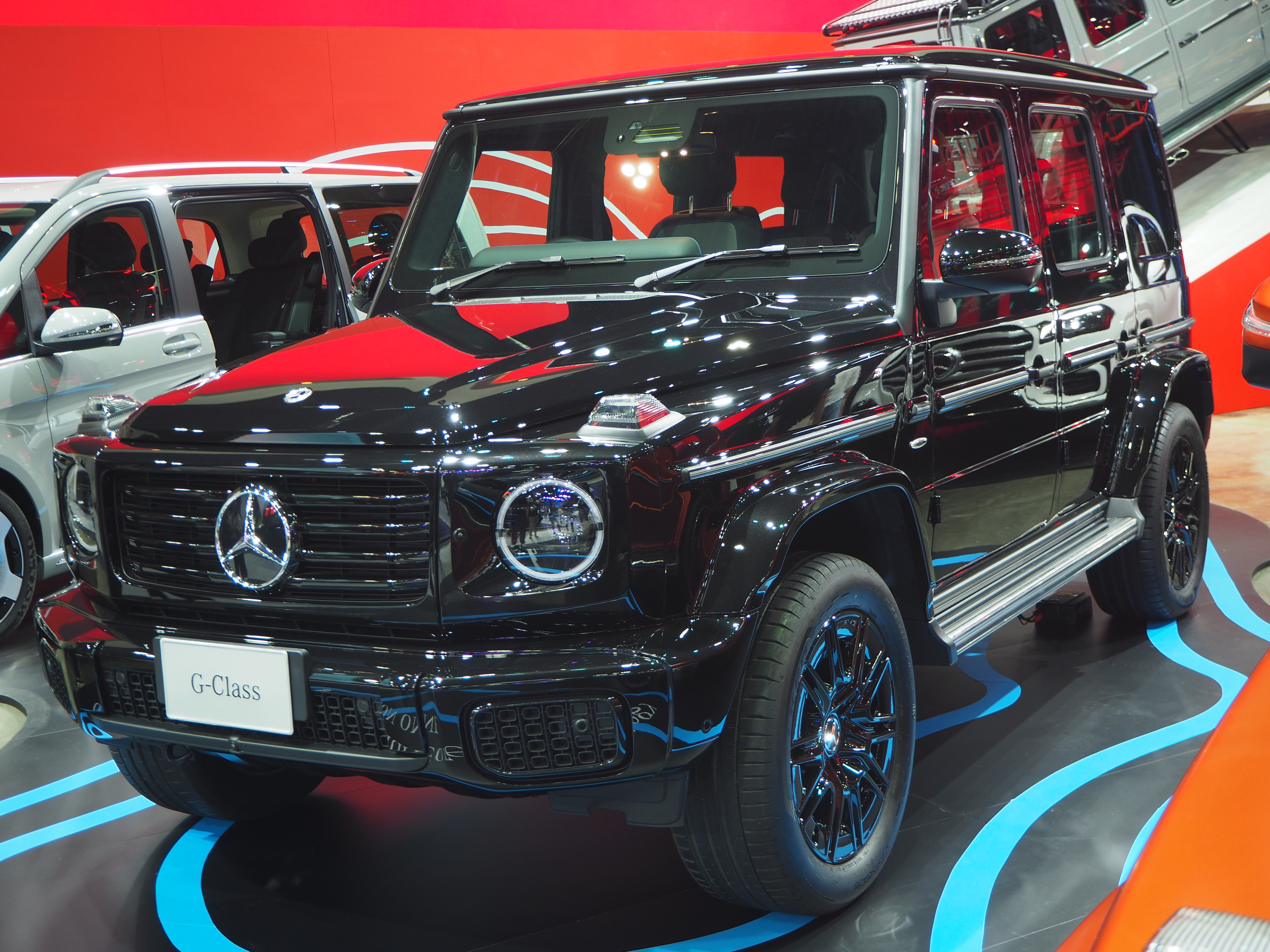
14. **Mercedes-Benz G-Class**The Mercedes-Benz G-Class is an automotive icon, instantly recognizable by its distinctive boxy silhouette and rugged yet luxurious personality. Frequently featured in movies and television, it projects an image of uncompromising capability and exclusive prestige. While many different models have joined the G-Class lineup over the years, each one carries with it an expectation of serious performance—and serious repair costs.
This formidable SUV, while built for durability and luxury, comes with a notable financial commitment in terms of upkeep. Owners face a 42.7% chance of needing to spend on some inevitable repair within the first ten years of ownership. This isn’t a minor gamble, but a significant likelihood that necessitates a well-padded savings account.
When these repairs do occur, they are far from inexpensive. The average cost over that ten-year period can easily exceed $16,500, placing the G-Class among the highest on our list for potential long-term expenditures. This substantial figure reflects the complexity of its engineering, the specialized parts, and the premium labor required to maintain such an iconic vehicle.
For those drawn to the G-Class’s unique blend of ruggedness and opulence, it’s vital to acknowledge that this isn’t just a vehicle for grand adventures; it’s also a significant long-term investment that demands ongoing financial readiness. The decision to own a G-Class should be made with a full understanding of its considerable maintenance requirements.
Read more about: Maximizing Your Investment: A Kelley Blue Book Deep Dive into Which Used Cars Hold Their Value Best in 2025
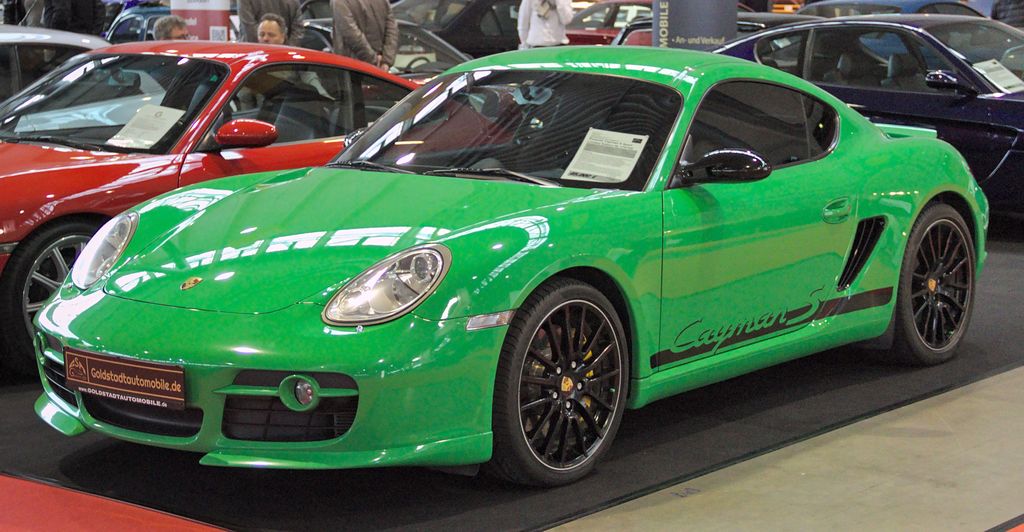
15. **Porsche Cayman**The Porsche Cayman epitomizes the ideal luxury compact sports car, captivating drivers with its stunning looks, impeccable handling, and exhilarating performance. It offers a pure, unadulterated driving experience that few other vehicles can match, making it a dream for enthusiasts who value agility and precision. The allure of having a Cayman in your name is undeniably strong, promising endless hours of driving pleasure.
However, the prestige and performance of the Cayman come with a caveat that can quickly deflate the joy of ownership: high maintenance and repair costs. While it’s a joy to drive, it might not be a joy to fix. According to RepairPal, its reliability rating is a mere 2 out of 5, indicating that it will likely need repair jobs frequently, making it a demanding companion for your wallet.
This consistent need for attention translates into a notable average annual maintenance cost of $1,135. This figure, while perhaps not as stratospheric as some other ultra-luxury vehicles on this list, still significantly outweighs the average maintenance costs for most cars. It means you’ll be spending a considerable amount just to keep your Cayman in optimal condition.
Therefore, prospective buyers should not be swayed solely by the Cayman’s initial appeal of looks and performance. It’s crucial to understand that owning this luxury compact car demands a robust long-term financial commitment for its upkeep. Budgeting adequately for these ongoing expenses is key to enjoying the Porsche experience without constant financial stress.
### Delving Deeper: Why Do Some Car Repairs Cost So Much?
It’s clear that certain vehicles come with exorbitant repair bills. But what exactly drives these costs so high? Understanding the underlying factors can help you make more informed decisions, not just about which car to buy, but how to approach its maintenance. The truth is, soaring repair costs often boil down to a combination of elements unique to the automotive industry today.
**Luxury Brands and Premium Materials**
Luxury car brands like Mercedes-Benz, BMW, and Audi are renowned for their sophisticated engineering and the high-end materials used in their construction. While these elements contribute to exceptional performance and unparalleled comfort, they also come with a significant price tag when it’s time for repairs. The intricate designs and specialized components often necessitate expert mechanics and expensive manufacturer-approved replacement parts.
For instance, a BMW might incorporate carbon fiber components, or a Mercedes-Benz might feature advanced electronic systems, both of which are proprietary and costly to reproduce or replace. These specialized materials and designs mean that even a seemingly minor repair can quickly escalate in cost due to the complexity and exclusivity of the parts involved.
**Technology and Advanced Features**
Modern vehicles are veritable marvels of technology, packed with state-of-the-art features designed to enhance safety, convenience, and driving pleasure. From sophisticated lane-keeping systems and adaptive cruise control to expansive infotainment touchscreens, these advancements are impressive. However, this high-tech integration makes them susceptible to complex malfunctions.
Repairing or replacing these advanced features is often far more expensive than fixing traditional mechanical parts. Consider the intricate process of replacing a Tesla Model S touchscreen console; what appears to be a simple fix can cost upwards of $1,500 due to its deep integration with the car’s central operating system. The more technology, the more specialized, and costly, the repair.
**Rarity and Limited Parts Availability**
Cars from niche brands or limited-production models face another unique challenge: a constrained supply of parts. When parts are hard to come by, prices naturally soar. This scarcity directly impacts repair costs, as mechanics might need to source components from far-flung locations, or even directly from overseas manufacturers.
Repairs for exotic cars, such as a Maserati or Lamborghini, frequently require importing parts directly from their manufacturers abroad. This process not only drives up the cost of the parts themselves but also adds significant shipping expenses and wait times, turning a repair into a lengthy and expensive ordeal.
**Specialized Labor**
The increasing complexity of modern vehicles, particularly luxury and high-performance models, demands mechanics with highly specific training and expertise. Hybrid and electric vehicles, for example, require technicians familiar with high-voltage components and intricate electrical systems, a skillset not found in every garage. Similarly, European cars often utilize diagnostic tools and repair procedures unique to their brand.
Vehicles like the Range Rover Evoque may necessitate factory-trained technicians who have undergone specialized certification. This level of expertise commands higher labor rates compared to vehicles that can be serviced at standard repair shops, significantly contributing to the overall cost of a repair.
**Age and Depreciation**
Perhaps one of the most insidious financial traps for unwary buyers is the allure of an older luxury model. While the initial purchase price might appear incredibly attractive—often just a fraction of its original cost—the reality of maintaining an aging high-end car can be far pricier than anticipated. As vehicles age, parts become more scarce, and components naturally wear out, leading to more frequent breakdowns.
What seems like a steal at first glance can quickly unmask itself as a financial black hole. The depreciation hit has already occurred for used luxury cars, but the maintenance costs begin to accelerate, creating a scenario where you save on the purchase but end up spending significantly more on simply keeping the vehicle on the road.
### Smart Strategies: How to Safeguard Your Savings from High Repair Costs
While the prospect of costly car repairs can be daunting, there are indeed actionable steps you can take to mitigate these expenses and protect your hard-earned savings. Being proactive and informed can make a world of difference, turning potential financial headaches into manageable expenses. Here are some practical tips to help you keep more money in your wallet.
**Stay on Top of Regular Maintenance**
This might sound obvious, but preventative care is your best defense against major repair bills. Sticking to your car’s recommended maintenance schedule—including regular oil changes, tire rotations, brake inspections, and fluid checks—ensures that your vehicle runs smoothly and can often catch minor issues before they escalate into costly failures. Think of it as a small, consistent investment that prevents a much larger one down the line.
Neglecting routine service is like ignoring a leaky faucet; eventually, you’ll have a flood. Keeping up with maintenance not only extends your car’s lifespan but also maintains its efficiency and performance, saving you money on fuel and preventing severe wear and tear on critical components. It’s the simplest yet most effective way to prevent costly repairs.
**Invest in Extended Warranties**
For luxury or high-tech vehicles, where repair costs can be particularly steep, a comprehensive extended warranty can serve as a vital financial buffer. These plans can shield you from the shock of exorbitant repair bills, especially as your vehicle ages beyond its factory warranty. Look for warranties that specifically cover electric systems, drivetrain components, and other high-priced parts that are common failure points in complex cars.
However, it’s crucial to do your homework when considering an extended warranty. Understand the coverage, exclusions, and the provider’s reputation. A well-chosen warranty can offer invaluable peace of mind, but a poorly understood one can lead to frustration and uncovered costs. Make sure the plan truly aligns with your vehicle’s potential vulnerabilities and your budget.
**Choose a Trusted Mechanic**
Finding a reliable, independent mechanic who specializes in your car’s brand can significantly reduce costs compared to dealership rates. Dealerships often have higher overheads and rigid pricing structures, whereas independent shops can offer more competitive pricing for equally skilled, if not more specialized, service. Developing a long-term relationship with a trusted mechanic ensures consistent, quality care.
Do your research: ask other owners for recommendations, check online reviews, and don’t hesitate to interview potential mechanics about their experience with your specific make and model. A good mechanic won’t just fix problems; they’ll also advise you on preventative measures and help you prioritize repairs, saving you money in the long run.
**Look for OEM or Used Parts**
When non-essential repairs are needed, or if you’re working on an older vehicle, you don’t always have to opt for brand-new parts directly from the manufacturer. Considering OEM (Original Equipment Manufacturer) parts, which are identical to factory parts but often sold by third parties, can offer savings without compromising quality. Even better, reputable shops often offer lightly used parts for certain repairs at significantly lower prices.
This strategy is particularly effective for components that aren’t critical for safety or performance, such as body panels or interior trim. Always ensure that used parts come from reliable sources and are inspected for quality. This approach can substantially cut down on the material cost of repairs, especially for luxury vehicles where new parts are exceptionally expensive.
**Understand Insurance Coverage**
Many drivers overlook the role their car insurance can play in mitigating repair costs beyond accident-related damages. It’s imperative to thoroughly understand what your specific policy covers. Comprehensive insurance, for instance, can cover damage from incidents like floods, hail, fire, or even vandalism, which can lead to substantial repair bills.
Some plans may also offer coverage for mechanical failures or roadside assistance, depending on how they are structured and negotiated. Regularly reviewing your policy with your insurance provider ensures you have the right amount of coverage for various scenarios, protecting you from unexpected repair expenses that aren’t typically associated with collisions.
**Do Repairs Yourself (When Possible)**
For DIY enthusiasts or those with some mechanical know-how, tackling basic repairs yourself can lead to significant savings on labor costs. Simple fixes like replacing air filters, spark plugs, windshield wipers, or even changing your oil are tasks that many car owners can learn to perform with a little guidance. There’s a wealth of online resources and instructional videos available to help you.
Not only does this save money, but it also provides a deeper understanding of your vehicle. However, it’s crucial to know your limits. Attempting complex repairs without proper tools or expertise can lead to further damage and even more expensive professional interventions. Stick to tasks you’re confident in, and always prioritize safety.
### Your Road Companion: Choose Wisely
Everything in life comes with a cost, and your choice of vehicle is no exception. The allure of luxury, performance, or raw utility can be strong, but as we’ve seen, it often comes with a significant ongoing financial commitment. To truly enjoy your road companion without constant anxiety, you should only commit to it if you are ready and willing to pay the price of its upkeep.
Car Model Information: 2016 Porsche Cayman GTS
Name: unbulleted list
Caption: Porsche Boxster Spyder (718)
Manufacturer: Porsche
Aka: unbulleted list
Production: unbulleted list
Assembly: unbulleted list
Class: Sports car
BodyStyle: unbulleted list
Related: unbulleted list
Layout: Rear mid-engine, rear-wheel drive layout
Predecessor: Porsche 968
Categories: All Wikipedia articles written in British English, All articles needing additional references, All articles with dead external links, All articles with unsourced statements, Articles needing additional references from August 2025
Summary: The Porsche Boxster and Cayman are mid-engine two-seater sports cars manufactured and marketed by German automobile manufacturer Porsche across four generations—as a two-door, two-seater roadster (Boxster) and a three-door, two-seater fastback coupé (Cayman).
The first generation Boxster was introduced in 1996; the second generation Boxster and the Cayman arrived in late 2005; and the third generation launched in 2012. Since the introduction of the fourth generation in 2016, the two models have been marketed as the Porsche 718 Boxster and Porsche 718 Cayman.
The nameplate Boxster is a portmanteau of boxer, a reference to its flat or boxer engine, and Speedster, a nod to the original Porsche Speedster of the 1950’s. The nameplate Cayman is an alternative spelling of caiman, a member of the alligator family.
In May 2025 Porsche North America confirmed the rumours that global “production for all current 718 Boxster and 718 Cayman variants, including RS models, is scheduled to end in October of” 2025. Porsche CEO Oliver Blume has confirmed future production of full-electric replacements but said they will arrive in the “medium term.”
Get more information about: Porsche Boxster and Cayman
Buying a high-performing used car >>>
Brand: Porsche Model: Cayman
Price: $79,980 Mileage: 16,833 mi.
Read more about: 14 Luxury Cars Quietly Going Out of Style: An In-Depth Look at Automotive Evolution
Ultimately, it’s all about finding a balance—a vehicle that genuinely satisfies your needs, comfortably fits your budget, and continues to work for you long after you’ve driven it off the lot. Before making your next car purchase, take the time to research thoroughly. Check online forums and reliability reviews for common issues, delve into projected repair costs, and don’t hesitate to seek insights from current owners. By making informed decisions now, you can navigate the road ahead with confidence and avoid costly surprises, ensuring your automotive journey is a smooth one, both literally and figuratively.

